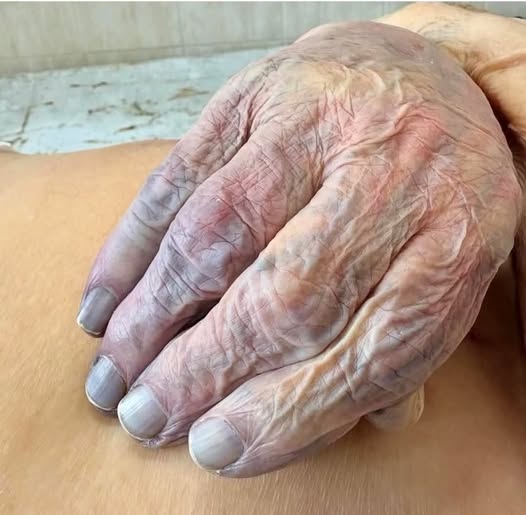What Your Hands Can Reveal About Your Health
The human body is an intricate system where even the smallest changes in one area can reflect deeper health issues elsewhere. While we often overlook our hands when it comes to detecting health problems, they can actually offer early warning signs of serious conditions — including heart disease, lung problems, and certain cancers. Below, we explore three subtle yet significant signs your hands may show, and what they could mean for your overall health.
1. Clubbed Fingers (Also Known as Drumstick Fingers)
What it looks like:
The tips of the fingers become enlarged and rounded, while the nails curve downward, creating a spoon-like shape.
Why it matters:
This gradual or sometimes sudden change is often linked to lung cancer, but it can also signal other serious lung or heart conditions, including:
Aortic aneurysm
Bronchiectasis
Congenital heart defects
Cystic fibrosis
Infective endocarditis
Idiopathic pulmonary fibrosis
Pulmonary abscess
Pleuritis
Is clubbing contagious?
No. Clubbing is not an illness itself, but rather a symptom of an underlying disease. If you notice this change, it’s important to consult a doctor for evaluation.
2. Swollen Finger Joints
What it looks like:
Joints in the fingers appear puffy or swollen, often more noticeable at the end of the day.
Why it matters:
This can be a sign of fluid retention, commonly associated with heart failure, as the heart struggles to circulate blood effectively. The swelling may also be related to high cholesterol, particularly in inherited cases, which can cause xanthomas — fatty deposits in the tendons near joints.
Health risks associated:
Increased risk of heart attack
Higher chance of peripheral artery disease
Possibility of early stroke if cholesterol is uncontrolled
✅ Swelling should never be ignored — it may be one of the earliest external signs of cardiovascular problems.
3. Unexplained Bruising on the Fingers
What it looks like:
Sudden appearance of bruises on the fingers, especially when there’s no clear injury or trauma.
Why it matters:
This can be a warning sign of leukemia, a type of blood cancer. In leukemia, excess abnormal white blood cells interfere with the blood’s ability to clot properly, leading to frequent bruising.
Other symptoms of leukemia may include:
Persistent fatigue
Frequent infections
Pale skin
Unexplained weight loss
Shortness of breath
Bone or joint pain
Swollen lymph nodes
Easy bleeding
⚠️ If you experience bruising along with any of the symptoms above, seek medical attention without delay.
Other Causes of Color Changes in Fingers
Color changes — like fingers turning blue or purple — may be related to Raynaud’s disease, a condition where blood vessels constrict in cold or stress. While often benign, it can also signal autoimmune conditions like:
Lupus
Crohn’s disease
If symptoms are frequent or painful, a deeper investigation is warranted.
Additional Signs of Heart Disease and Cancer to Watch For
Besides changes in your hands, there are other common signs of serious illnesses worth noting:
Heart Disease Symptoms:
Chest pain or pressure
Shortness of breath
Swelling in legs, feet, or ankles
Persistent fatigue
Irregular heartbeat or palpitations
Coughing or wheezing
General Cancer Symptoms:
Unexplained weight loss
Long-lasting fatigue
Difficulty swallowing or eating
Swelling or lumps in the body
Persistent pain or discomfort
Skin changes or non-healing wounds
Chronic cough or hoarseness
Unexplained bleeding or bruising
Many of these symptoms can appear in less serious conditions, but early evaluation is key.
Conclusion: Don’t Ignore What Your Hands Are Telling You
Our hands do more than perform tasks — they can reflect our internal health in subtle but powerful ways. Whether it’s:
Clubbing of the fingers,
Swelling in the joints, or
Unexplained bruising,
These signs may point to serious issues like heart disease, cancer, or other systemic conditions.
If you observe any of these changes, don’t wait — talk to a healthcare provider. Early detection leads to better outcomes, and paying attention to your body’s signals can make all the difference.
